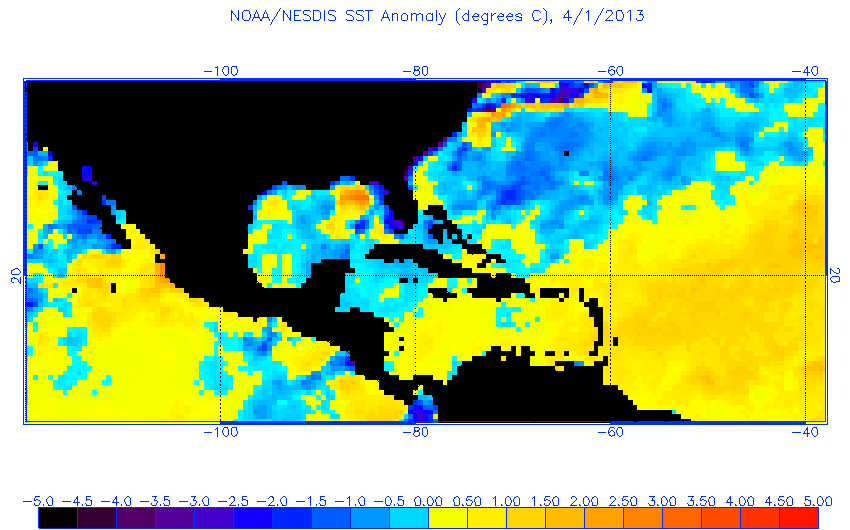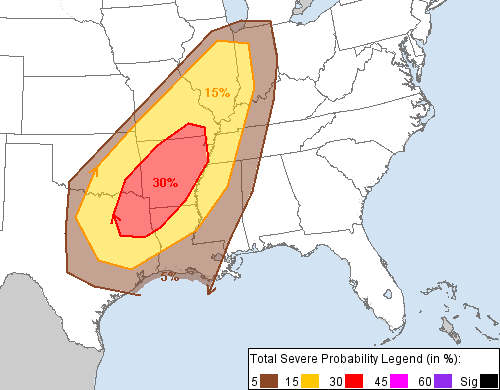
This outlook looked very similar to the previously issued Day 3
Outlook but had some major differences when compared to the map I posted
just a hour before they issued their outlook, which can be seen below.
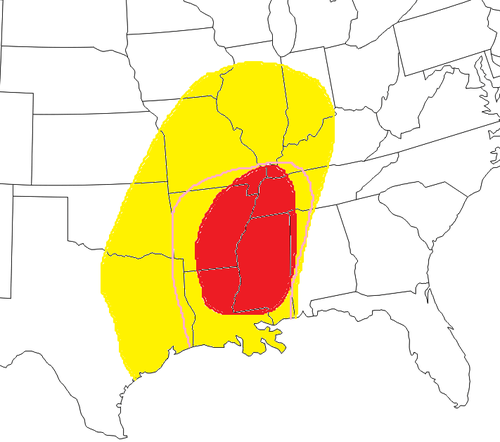
While I did not disagree with the location of the 30% risk issued by
the SPC, I questioned their reasoning for not continuing this risk into
the night, downstream of their current region. It appeared the only
reason may be a concern about decreasing instability overnight but as I
viewed the models again, I was confident this should not be a limiting
factor. In fact, as I will show further in this post, the best
instability will actually be during the early overnight hours.
Late this morning during the next issuance of the Day 2 Outlook, the
SPC issued an outlook which was much more in line with my previous
thoughts from the night before, as can be seen below. In fact, a
moderate risk was even issued for some areas (seen here as the 45%
hatched region). This new outlook actually raised some areas in
Mississippi from a 5% risk of severe weather within 25 miles of a point
to a 45% chance of severe weather within 25 miles of a point with at
least a 10% chance of significant severe weather, a very drastic change!
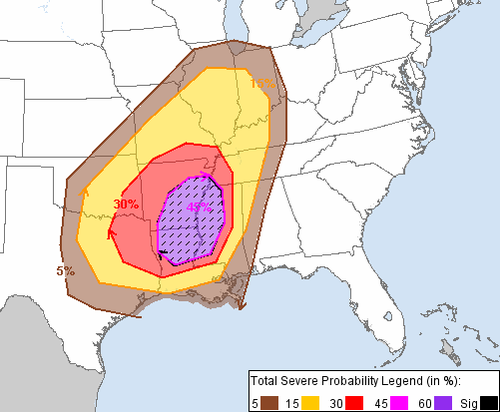
This will be the first significant severe weather outbreak of the
year, with tens to hundreds of damaging wind reports expected and
perhaps a few tornadoes as well. Just how significant might this event
be?
Well, over the past 15 years, only five Day 2 moderate risks have
been issued in January by the SPC. What happened those other four
times?
January 22, 1999: 43 tornadoes, including 2 F3
tornadoes, injured 20 people and killed one across Alabama, Arkansas,
Illinois, Kentucky, Louisiana, Mississippi, Tennessee, and Texas
resulting in about $76 million in damages.
January 3, 2000: 11 tornadoes, including 3 F3
tornadoes, and 101 wind damage reports resulted in 21 injuries across
Arkansas, Indiana, Kentucky, and Mississippi resulting in about $72
million in damages.
January 2, 2006: 18 tornadoes, including 1 EF3
tornado, and 73 wind damage reports as well as 107 reports of 3/4” hail
or greater resulted in 5 injuries across Georgia, Florida, Illinois,
Kentucky, and Missouri resulting in $7 million in damages.
January 13, 2006: 19 tornadoes and 45 wind damage
reports injured 34 people and killed one across Alabama, Florida,
Georgia, Louisiana, North Carolina, South Carolina, and Virginia
resulting in $7 million in damages.
Needless to say, a multi-million dollar day in damages could be ahead
of us based on these prior events. So let’s take a look at the details
using the 00Z NAM model run. I expect that thunderstorms will be
ongoing at the start of the day in the Oklahoma area and will quickly
expand in coverage throughout the morning across the western portions of
the threat region. It appears initial convection will begin to form
into a squall line rather quickly, though a few discrete cells out in
front of the line in Arkansas, Missouri, or Illinois may not be out of
the question. By afternoon instability will be on the increase as
evidenced by the image below showing CAPE values during the evening.
This will allow the squall line to intensify as it becomes more
organized across Texas, Arkansas, Oklahoma, Missouri, and Illinois, as
shown by the simulated reflectivity image below for the same time as the
CAPE image.
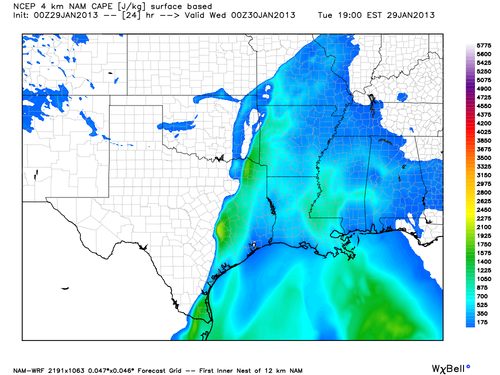
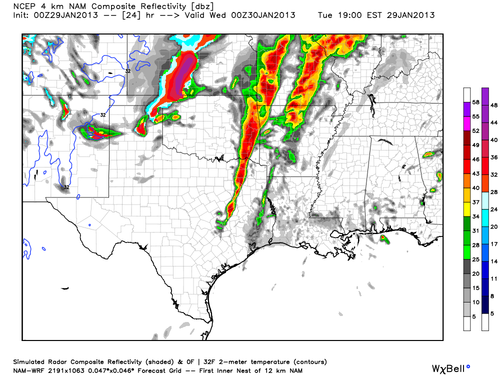
As night falls, expect CAPE values to remain steady or rise slightly
in front of the squall line as the trough becomes more negatively
tilted. This will allow colder air to flow in aloft resulting in
steeper lapse rates and these better CAPE values. Additionally the
low-level jet will really strengthen after nightfall, aiding in shear
values which could improve the chances for tornadoes as well as the
chances for wind damage. This low-level jet is shown for around the
midnight hour and it can be seen that many areas will have wind speeds
of 50 knots or greater just a few thousand feet above the surface.

This could strengthen effects of the squall line even further as
shown by the simulated radar image below for around midnight. One other
serious thing to note on this radar image is something the NAM model
has been advertising more and more today and it will be interesting to
see what the RAP and HRRR models have to say about this soon when they
begin to predict out this far. That thing is, discrete cells in front
of the squall line. According to the latest run of the NAM, these cells
may start up in southern Mississippi and southern Alabama a couple
hours after dark and rapidly speed toward the north northeast at 40 to
60 mph. Current indications are that these discrete cells could affect
portions of Mississippi, Alabama, and Tennessee before being overtaken
by the fast-moving squall line in the early morning hours.
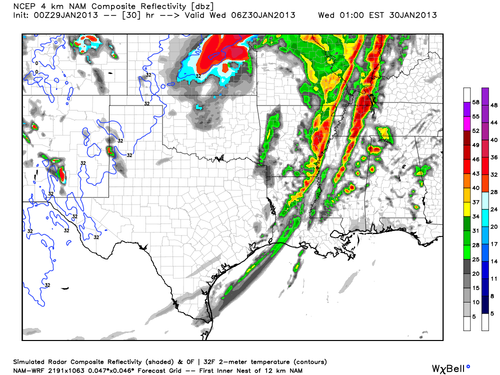
If these cells do indeed form, they will have incredible speed shear
to work with and some directional shear. This shear has resulted in
large helicity values across the aforementioned region and EHI values
could also be fairly good for this time of year. The EHI values for
around midnight are shown below. It is important to note that while the
RAP model does not show out this far in the future yet, comparing times
that it does go out to with the NAM solution has indicated that the RAP
believes that EHI values could be stronger than the NAM depicts.
Stronger EHI values could show a greater chance of tornadoes during the
overnight hours.
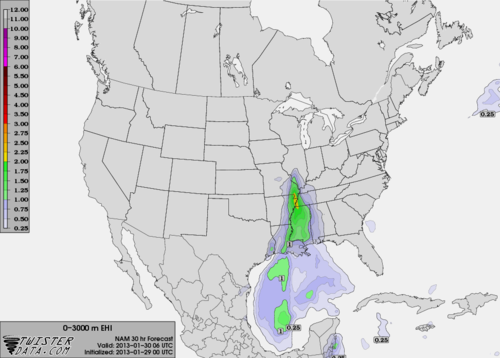
Another thing that could aid in the evolution of supercells during
the night is what the NAM model indicated could occur during the
afternoon hours across portions of Mississippi and Alabama. This thing
is a clearing in the clouds. If the clouds do clear for a bit or even
thin during the afternoon hours, daytime temperatures could raise
quickly resulting in higher values of CAPE and a much more unstable
atmosphere.
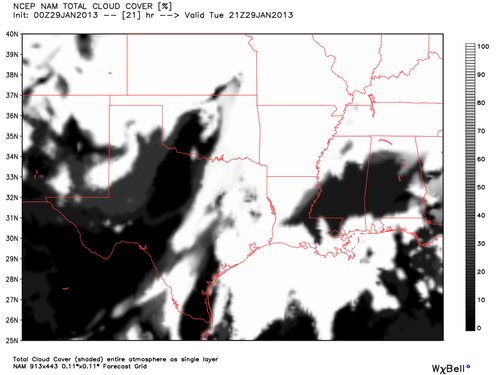
After the early morning hours, discrete cells should begin to die off
and merge with the squall line as instability wanes. The squall line
should also weaken some as we head into sunrise. Given all of this
information I have produced a couple more maps below indicating my
threat regions for wind damage and potential for tornadoes.
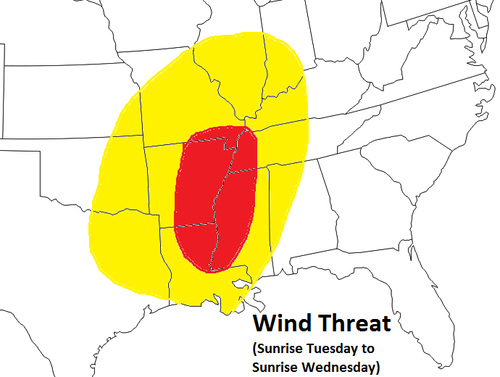
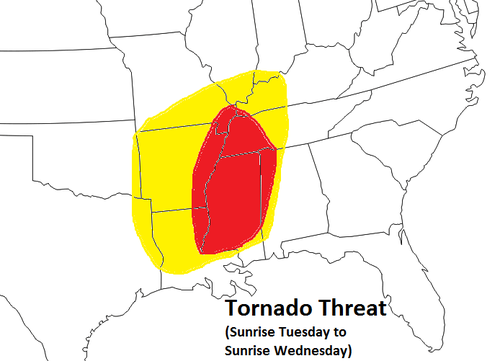
Tomorrow and tomorrow night will certainly bring about many wind
damage reports. Tornadoes will certainly be a possibility, especially
if those discrete cells form overnight. Nevertheless, any sunshine that
can peak through tomorrow will enhance the severe weather threat but
even without the sun, a potent trough coupled with strong atmospheric
winds at all levels will be enough to spark severe thunderstorms. Keep
alert and know where you can get your severe weather information
tomorrow and especially tomorrow night. Try to find a way to get
notifications even when you are asleep as these will be the best hours
for tornado potential. Stay safe everyone!
 Lake effect rain and snow showers will likely get started shortly after sunset tonight and will continue throughout the overnight. At this point it looks like if you are inland of Lake Ontario that the atmosphere should be cold enough in the low levels for a complete changeover to snow by midnight. This activity will start across the northern half of Jefferson and Lewis Counties and sink south to around southern Jefferson and central Lewis Counties around midnight. By sunrise the lake effect rain and snow will centered across the Tug Hill area. As temperatures warm with sunrise, the lake effect snow will begin to change back to all rain by late morning and the band itself will continue to sink south slowly, perhaps reaching a few areas just south of the Tug Hill region. By early afternoon if any lake effect rain is around it should begin to break up quickly as 850 mb temperatures warm and create a less favorable environment for lake effect. The band may also move slightly north before dissipating. To the right is what I expect for snowfall totals tonight and early tomorrow morning. The gray area will have snowflakes possible tonight, the light blue area will have snowflakes likely with a dusting of snow possible, and the darker blue area will probably see a dusting a snow and perhaps up to an inch or so in some areas.
Lake effect rain and snow showers will likely get started shortly after sunset tonight and will continue throughout the overnight. At this point it looks like if you are inland of Lake Ontario that the atmosphere should be cold enough in the low levels for a complete changeover to snow by midnight. This activity will start across the northern half of Jefferson and Lewis Counties and sink south to around southern Jefferson and central Lewis Counties around midnight. By sunrise the lake effect rain and snow will centered across the Tug Hill area. As temperatures warm with sunrise, the lake effect snow will begin to change back to all rain by late morning and the band itself will continue to sink south slowly, perhaps reaching a few areas just south of the Tug Hill region. By early afternoon if any lake effect rain is around it should begin to break up quickly as 850 mb temperatures warm and create a less favorable environment for lake effect. The band may also move slightly north before dissipating. To the right is what I expect for snowfall totals tonight and early tomorrow morning. The gray area will have snowflakes possible tonight, the light blue area will have snowflakes likely with a dusting of snow possible, and the darker blue area will probably see a dusting a snow and perhaps up to an inch or so in some areas.



























